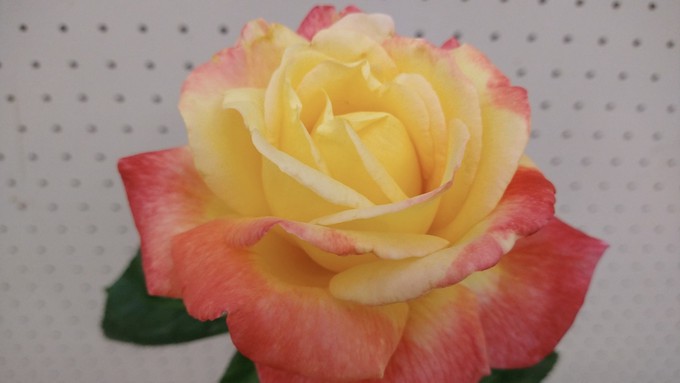
Roses are more popular than ever, but what do they mean?

This beauty is the Love and Peace rose, a moderately fragrant hybrid tea. Debbie Arrington
Happy Valentine’s Day! This is not only a date to celebrate romance but a good time to talk roses.
More than 250 million roses were produced for this Valentine’s Day, says the Society of American Florists. Those bouquets represent the bulk of an estimated $2.6 billion that Americans will spend on Valentine flowers this year, says the National Retail Federation.
Roses are by far the most popular gift flower year round, and their demand continues to grow. In 1989, Americans bought an estimated 1 billion roses over the course of the entire year (with Valentine’s Day being the peak period for rose sales). In 2023, U.S. rose sales hit 2.8 billion stems – enough for every adult American to get one 10-rose bouquet (plus a lot left over).
Why roses? According to florists, roses carry a lot of extra meaning, especially as a symbol of love.
That emotion has many shades, with different rose colors evoking various meanings. According to online florist BloomsyBox, roses hint at these qualities:
*White roses: Innocence and purity.
* Pink roses: Romance and happiness.
* Coral roses: Desire.
* Yellow roses: Love between friends.
* Peach roses: Modesty and appreciation.
* Lavender roses: Love at first sight.
* Red roses: Passionate love.
Most of those meanings were well known to Victorians, who used flowers to send coded messages.
In 1884, Kate Greenaway, a wildly popular illustrator of Victorian children’s books, created her illustrated “Language of Flowers” with hundreds of referenced blooms. Greenaway included 34 meanings just for roses (including those above), depending on their variety, color and form.
As for “love,” there are dozens of possible bouquet candidates (including fillers as well as flowers), depending on the intensity of that affection. Among them: Yellow acacia (“secret love”), ambrosia (“love returned”), red mum (“I love you”), yellow mum (“slighted love”), purple lilac (“first emotions of love”), lotus (“estranged love”), magnolia (“love of nature”), moss (“maternal love”), pear blossoms (“affection”) and pink carnations (“a woman’s love”).
As for adding a little rose love to your garden, February is a wonderful time to plant new bushes. The names of more than 15 varieties start with the word “Love,” “Love’s” or “Loving.” That includes the red grandiflora ‘Love’ as well as the hybrid teas ‘Love and Peace,’ ‘Love at First Sight,’ ‘Love Me Tender’ and ‘Loving Memory.’
For more on roses: https://www.rose.org/
Comments
0 comments have been posted.Sacramento Digs Gardening to your inbox.
Sites We Like
Garden Checklist for week of May 5
Survey your garden after the May 4 rainstorm. Heavy rain and gusty winds can break the neck of large flowers such as roses. Also:
* Keep an eye on new transplants or seedlings; they could take a pounding from the rain.
* Watch out for powdery mildew. Warmth following moist conditions can cause this fungal disease to “bloom,” too. If you see a leaf that looks like it’s dusted with powdered sugar, snip it off.
* After the storm, start setting out tomato transplants, but wait on the peppers and eggplants (they want warmer nights). Pinch off any flowers on new transplants to make them concentrate on establishing roots instead of setting premature fruit.
* Trim dead flowers but not leaves from spring-flowering bulbs such as daffodils and tulips. Those leaves gather energy to create next year's flowers. Also, give the bulbs a fertilizer boost after bloom.
* Pinch chrysanthemums back to 12 inches for fall flowers. Cut old stems to the ground.
* Mulch around plants to conserve moisture and control weeds.
* From seed, plant beans, beets, cantaloupes, carrots, corn, cucumbers, melons, pumpkins, radishes and squash.
* Plant onion sets.
* In the flower garden, plant seeds for asters, cosmos, celosia, marigolds, salvia, sunflowers and zinnias. Transplant petunias, zinnias, geraniums and other summer bloomers.
* Plant perennials and dahlia tubers for summer bloom.
* Don’t wait; plant summer bulbs, such as gladiolus and tuberous begonias.
* Harvest cabbage, lettuce, peas and green onions.